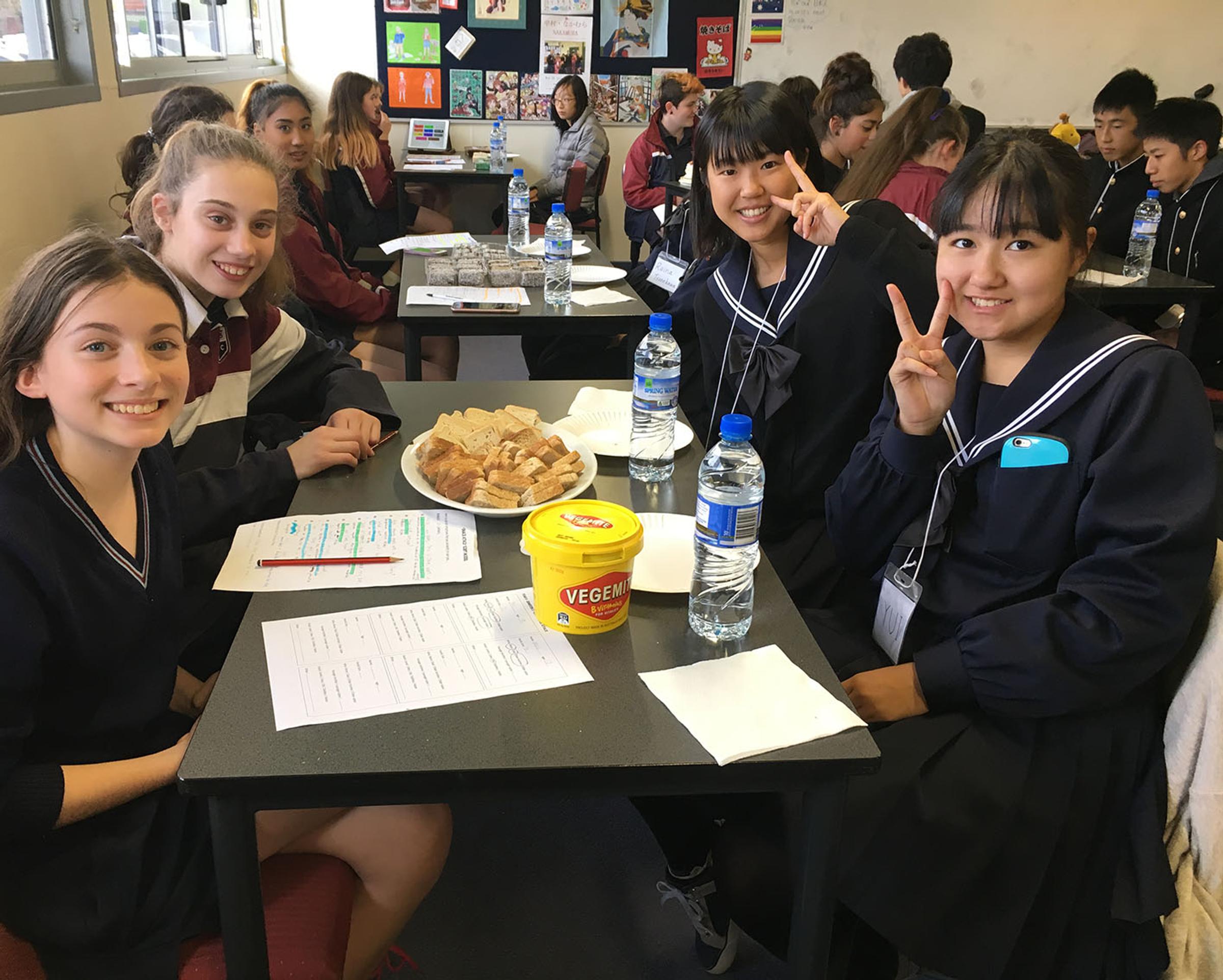Language Week

Bonjour! Konnichi wa! Guten Tag! Hola! Salve! Ni Hao! Anyoung haseyo! Jambo! Yassas! Namaste! Selam! Shalom! God dag! Privet!
MGSC is celebrating Languages this week, with the aim of promoting the language and culture of France and Japan. Under other circumstances MGSC would have been hosting students from Nakamura Senior High School and with a feast of language-based events each day at school.
Languages Week 2020 is happening at home and online.
Kyara-ben
Students were invited to get creative and design Kyara-ben or edible food art.
Kyara-ben is short for 'Character Bento,' the art of making cute, detailed box lunches that look like popular characters. Extremely popular in Japan, it is not uncommon for Japanese mums to create cute and intricate designs for their children’s lunches. However, Kyara-ben is not just enjoyed by children, but has been popularized for people of all ages in Japan and around the world through social media and magazines.
Don’t have a lunch box? That’s OK! You can use a shallow Tupperware container, or any other suitable dish. We will even allow your ‘canvas’ to be a piece of toast if you wish.
The most important criteria for your design is that is must incorporate some aspect of French or Japanese culture. Be as creative as you can, using whatever edible items you have in your kitchen to create cute, colourful and beautiful art!
The Kyara-ben / Edible Food Art will be judged according to:
- Design – best French / Japanese fusion
- Creativity / use of materials
House Points will be awarded to all entries. Winners will be featured in the next newsletter, and a suitable prize will be presented.
Entries close: Monday 17 August
Submit your entry by using this link: https://forms.gle/oFPfpQ8ZUz6ucMDw7
Emoji challenge
The second challenge involves the use of emojis.
One of the benefits of learning a foreign language, like French or Japanese, is that it strengthens your ability to apply creative and critical thinking skills in order to communicate a message.
Before written words were invented, 'language' was mainly using auditory means of transmission, though grunts, whistles or drumbeats. In some cases, there were drawings, hand signals or smoke signals.
The word emoji comes from two Japanese words - "e" which means "picture" and "moji" which means "character". Emojis were created in 1998 by Shigetaka Kurita, an engineer at a Japanese telephone company. The challenge for students is to work out what message the emojis are trying to get across.
To enter use this link: https://forms.gle/jdwbpxKTKTSTpaJJ6
House Points awarded for those that participate.
Entries close: Friday 14 August at 4pm.
There will be a Languages Week wrap in the next newsletter
Petra Witt
Japanese Teacher
